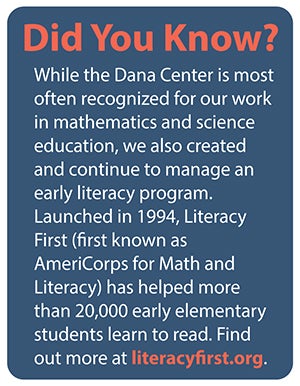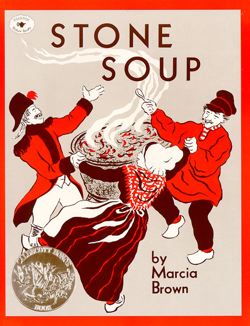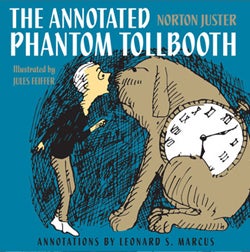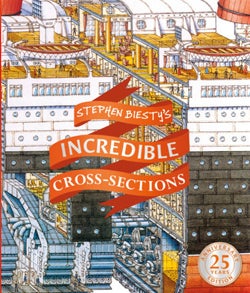
Overcoming Math Anxiety Through Stories
 I don’t remember when or how I learned to read. But, despite my best efforts to block it out, I vividly remember the terror I felt when I first hit a wall in learning mathematics.
I don’t remember when or how I learned to read. But, despite my best efforts to block it out, I vividly remember the terror I felt when I first hit a wall in learning mathematics.
Decimals maybe. Or long division. (I know, right?)
Turns out, many young children—and older ones too—can get freaked out by numbers.
Michael Greenlee, one of our resident experts in teaching elementary mathematics, has some neat ideas for books that teachers, parents, and other doting adults can use to engage children in and with mathematics—sometimes without the kids even knowing it.
Mike’s framework includes three categories of books that can engage young readers in mathematical concepts and problem-solving.
Books Featuring Specific Math Concepts
 Many, many, many children’s books have been written by math people to teach a math topic via a narrative. These books are written explicitly to teach a single specific math concept.
Many, many, many children’s books have been written by math people to teach a math topic via a narrative. These books are written explicitly to teach a single specific math concept.
Intended to be used as a read-aloud by a teacher with their class, or a parent with a child, some of Mike’s favorites include the following.
The Greedy Triangle: Part of the “Marilyn Burns Brainy Day Books” series, The Greedy Triangle tells the story of an anthropomorphized shape who has the smallest number of sides of any polygon and wants to get more. Complications ensue. So does learning about shapes and angles. Appropriate for very young readers.
Stone Soup: A retelling of an old fairy tale, this book was awarded a Caldecott Medal for its illustrations. Good for learning about counting and adding on. Appropriate for early elementary readers.
Sir Cumference and the Dragon of Pi: A Math Adventure: This illustrated story, part of a popular series, teaches geometry concepts. Appropriate for upper elementary readers.
Books Using Math to Advance the Narrative
 There are plenty of books out there that rely on math to advance the narrative. These titles are appropriate for middle and upper elementary readers.
There are plenty of books out there that rely on math to advance the narrative. These titles are appropriate for middle and upper elementary readers.
The Number Devil: A Mathematical Adventure: The author wrote this book at the suggestion of his 11-year-old daughter. In it, a young boy is visited in his dreams by a “number devil,” who takes him on fantastical journeys that also happen to explore interesting numerical principles.
The Phantom Tollbooth: A Mathical Hall of Fame selection for 2016, The Phantom Tollbooth tells the story of Milo, who journeys through the Kingdom of Wisdom on a quest to rescue the princesses Rhyme and Reason, exiled for deciding that letters and numbers are equally important.
A Wrinkle in Time: A Newbery Medal winner, a Mathical Hall of Fame selection, in print continuously since its publication in 1962, and now a movie starring Oprah. The narrative is framed and fueled by advanced mathematics. This educator even built a geometry lesson around the novel after the movie came out in 2018.
Books Showcasing Interesting Facts (That Set Up Problem-Solving Opportunities)
 “A great way to engage kids,” Greenlee said, “is to give them a word problem without any numbers. There’s no longer the anxiety of ‘I have these numbers and I have to do something with them’—instead, it’s ‘I can read these words, make sense of them, and try to sort out the situation.’ It becomes way less intimidating.”
“A great way to engage kids,” Greenlee said, “is to give them a word problem without any numbers. There’s no longer the anxiety of ‘I have these numbers and I have to do something with them’—instead, it’s ‘I can read these words, make sense of them, and try to sort out the situation.’ It becomes way less intimidating.”
These resources can help reduce or bypass math anxiety, as students focus on the context rather than the numbers. Math becomes just another tool for figuring things out. These titles are most appropriate for middle to upper elementary readers.
Guinness World Records: From an annual book in 1955 to a burgeoning empire today, the “World Records” franchise is immensely popular with elementary age students. Canny teachers like Mike can use its scenarios as a context for all kinds of interesting problem situations, particularly around measurement, proportion, and ratio. For example, how many inches (feet, meters, centimeters) taller than you is the world’s tallest woman?
Stephen Biesty’s Incredible Cross-Sections: A whole series of books and posters showing intricately drawn cross-sections and “exploded view drawings” of something you’d ordinarily never see unpacked. While most of these books have detailed call-out boxes and captions, there is no narrative. Instead, one cross section might show the constituent layers and pieces of an aircraft carrier, along with numbers for how many people, aircraft, supplies, and so on it can carry. Great for sparking interesting problem-solving opportunities.
What other books do you use in your classroom to ease math anxiety? Let us know your #mathbooks on Twitter!
And to dive more deeply into teaching best practices, visit Inside Mathematics. You’ll find free videos, coaching tools, and other resources for K–12 classrooms.
About the Author
Rachel A.O. Jenkins
More than 20 years ago, on my second day on the job, I told Uri Treisman that I’d never, uh, studied calculus. His response? “It’s not too late.” Before I started working here, I hadn’t understood that math is a language. The most precise language we have for capturing reality.
Get in Touch
We collaborate with state districts and teachers to develop innovative curricula, resources, and professional development.
